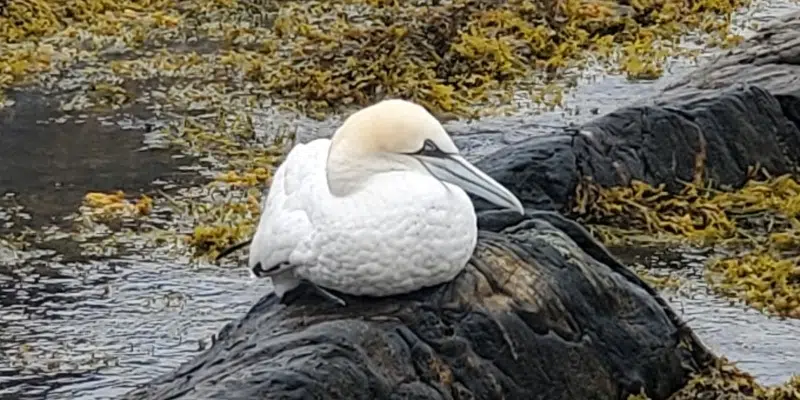The Canadian Wildlife Service says while the incidence of avian flu appears to be down from last year, the full impact of last year’s outbreak is still being assessed.
The highly pathogenic bird flu hit a number of local sea bird species particularly hard last year, including northern gannets and common murres, known locally as turres.
Bird carcasses littered beaches around the province last year, but Wildlife Emergency Response Coordinator with the Canadian Wildlife Service, Rob Ronconi says they have received far fewer reports of dead or dying birds along the coast of Newfoundland and Labrador this summer.

Northern Gannet sick with Avian Influenza in August of 2022 along the Northeast coast Newfoundland. Photo via Environment and Climate Change Canada, Sabina Wilhelm.
Ronconi says they’ve been tracking the incidence of the disease by testing live birds, dead birds and hunted birds, and the results this year show a big dip in the number of birds affected by avian flu.
He says only about three per cent of the 600 birds tested in the NL region so far this year have tested positive. “We’re in a much better situation than last year” says Ronconi.
Officials have also been monitoring nesting sites to assess the impact on seabird populations, and while the data is still being compiled, they have noticed fewer birds at places like Cape St. Mary’s, one of the largest gannet colonies in the country.
Ronconi says how the numbers compare to previous years is something they’re still working on.
Anyone who sees a dead or dying seabird is asked to report it to the provincial department of fisheries and forestry by calling 709-685-7273.























